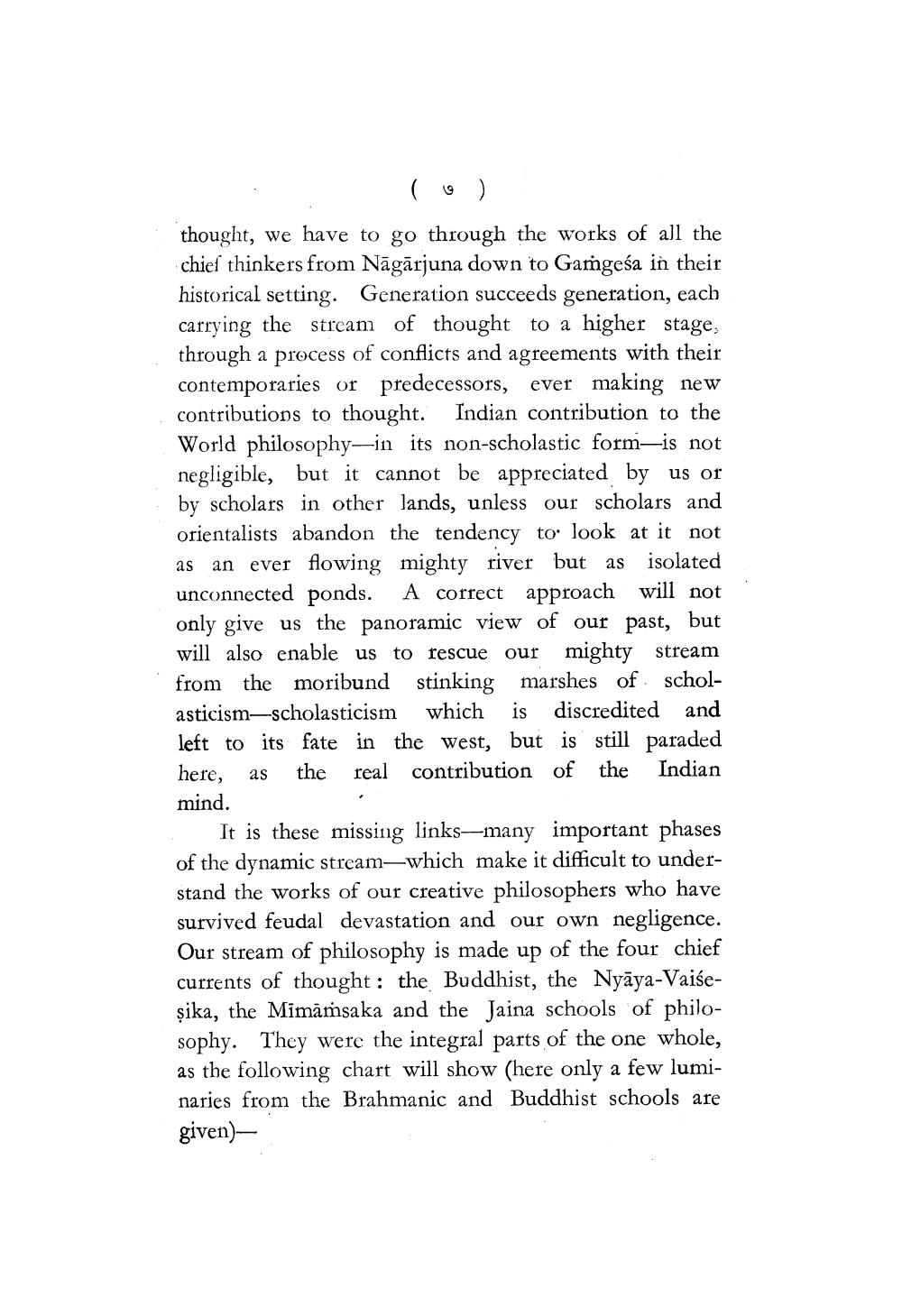________________
thought, we have to go through the works of all the chief thinkers from Nāgārjuna down to Gamgeśa in their historical setting. Generation succeeds generation, each carrying the stream of thought to a higher stage: through a process of conflicts and agreements with their contemporaries or predecessors, ever making new contributions to thought. Indian contribution to the World philosophy-in its non-scholastic form—is not negligible, but it cannot be appreciated by us or by scholars in other lands, unless our scholars and orientalists abandon the tendency to look at it not as an ever flowing mighty river but as isolated unconnected ponds. A correct approach will not only give us the panoramic view of our past, but will also enable us to rescue our mighty stream from the moribund stinking marshes of scholasticism—scholasticism which is discredited and left to its fate in the west, but is still paraded here, as the real contribution of the Indian mind.
It is these missing links—many important phases of the dynamic strcam—which make it difficult to understand the works of our creative philosophers who have survived feudal devastation and our own negligence. Our stream of philosophy is made up of the four chief currents of thought : the Buddhist, the Nyāya-Vaiseșika, the Mimāṁsaka and the Jaina schools of philosophy. They were the integral parts of the one whole, as the following chart will show (here only a few luminaries from the Brahmanic and Buddhist schools are given)




